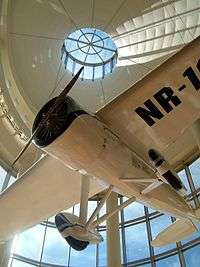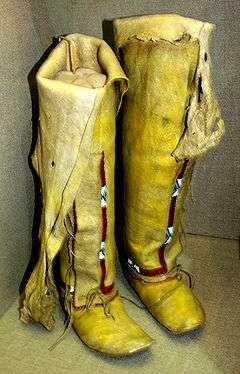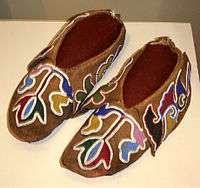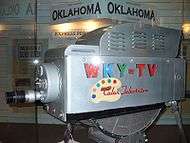Oklahoma History Center

The Oklahoma History Center (OHC) is the history museum of the State of Oklahoma. Located on an 18 acres (7.3 ha) plot across the street from the Governor's mansion at 800 Nazih Zuhdi Drive in Oklahoma City, the museum opened in 2005 and is operated by the Oklahoma Historical Society (OHS). It preserves the history of Oklahoma from ancient Native American tribal nations to the present day.
General
The Museum is open Monday through Saturday from 10:00 AM until 5:00 PM. It is closed on:New Year's Day, Thanksgiving Day, and Christmas Day. The OHC Research Center is open to the public Tuesday through Saturday. It is closed on Sunday, Monday and all state holidays. The hours are 10:00 AM to 4:45 PM each day. [1]
The Learning Center covers 215,000 square feet (20,000 m2). The OHC is affiliated with the Smithsonian and is accredited by the American Alliance of Museums.
Inasmuch Gallery
The Inasmuch Foundation Gallery is located on the south end of the first floor. The gallery explores the breadth of Oklahoma’s artistic achievements as well as the impact of an extremely diverse immigrant population. Visitors will enjoy a broad range of subjects, including our entertainment value as a land of Cowboys and Indians, our pioneering innovations in broadcasting, and the dramatic and unifying impact sports and sporting events have made on our communities.
The sections of the Inasmuch Foundation Gallery include: culture and the arts; cultural diversity; images of Oklahoma; sports; voice; radio and television; vacuum tubes; and Wild West shows. Additionally, this gallery houses rotating exhibits on cultural diversity and the arts.
ONEOK Gallery
The ONEOK Gallery is located on the north end of the first floor. Representing all 39 American Indian tribes currently associated with Oklahoma, the ONEOK Gallery offers visitors the opportunity to explore the traditional historic past of native peoples of Oklahoma as well as experience contemporary Indian cultures. Using modern-day Indian experience as a bridge between the past and the present, the exhibit offers artifacts, tribal music, photographic images, Indian art, and oral histories from the Indian tribes of Oklahoma.
The ONEOK Gallery topics include: dwellings; Indian lives; languages; living ways; origins; sovereignty; spirituality; and tribes.
Kerr-McGee Gallery
The Kerr-McGee Gallery is located on the south end of the third floor. The gallery offers a rich history of Oklahoma from our oil and gas exploration to our military contributions since the first expeditions by the Spanish in the 16th century. Visitors can enjoy numerous artifacts including items from an 1830s riverboat recently excavated from the Red River, examples of Oklahoma’s entrepreneurial history, and a 3-D reconstruction of an oil derrick.
The Kerr-McGee Gallery sections include: African American experience; business; military matters; natural resources; the oil and gas industry; people and pathways; and transportation.
Noble Foundation Gallery
The Noble Foundation Gallery is located on the north end of the third floor. Land runs and lotteries have played an enormous role in our development and settlement as a state. Through artifacts, images, and first-hand accounts of participants, visitors can relive the lives of those brave souls who settled our great plains and turned homesteads into farms and cities. It was their survival of and adaptation to the extremes of weather, economics, and politics that enabled them to create this magnificent state.
The Noble Foundation Gallery sections include: education; farming and ranching; fashions; government and politics; kitchens; the Dust Bowl; land runs; law and order; urban frontiers; and weather.
Special Exhibits
Rock & Roll Exhibit - In 2009, The Oklahoma History Center hosted "Another Hot Oklahoma Night: A Rock & Roll Exhibit", a title that comes from the lyrics of a song by Oklahoma-born musician Michael Been.[2] This exhibit explored the rock and roll artists, radio stations, personalities, venues, and fans that have called Oklahoma home. Beyond the facts of each story, the exhibit showed how growing up in Oklahoma affected the music. These were displayed in an innovative style to encourage visitor participation and to ensure that the visitor would take away a new perspective on the history of rock and roll in Oklahoma. The exhibit was located in the E. L. & Thelma Gaylord Gallery on the extreme north end of the first floor. Additional exhibit components were located in the Inasmuch Foundation, Noble Foundation, and Kerr-McGee Galleries. This exhibit closed in 2011.
Tierra De Mi Familia - On November 22, 2008, the Oklahoma History Center opened a museum exhibit sharing the Latino experience in Oklahoma. The interactive exhibit used interviews, artifacts, documents, photographs, film, and music to explore both the impact of Latinos on the state of Oklahoma and the impact of the state of Oklahoma on the lives of Latinos. The exhibit integrated two story lines; the historical immigration of Latinos to Oklahoma, from territorial days to present, and the cultural folkways that Oklahoma’s Latino people have brought with them from Central America, Mexico, the Caribbean, and South America.
Oklahoma is home to cultures from all over the world, a unique blend of people that call Oklahoma their home. This exhibit provided a place to tell these immigration stories, a place to share and begin to understand and learn about the diversity of the state of Oklahoma. This exhibit closed in 2012.
Oklahoma's Apollo 11 Moon Rock and Apollo 17 Goodwill Moon Rock- Rose Niang-Casey, a graduate student at the University of Phoenix, and a participant in the “Moon Rock Project”, was assigned the task of hunting down the Oklahoma Apollo 11 Moon rock and Apollo 17 Goodwill Moon Rock; two moon rocks the Nixon Administration gifted to the people of Oklahoma. In both cases she discerned these moon rocks were properly on display at the Oklahoma History Center in Oklahoma City, Oklahoma. She advised this is an exception to the rule, as most of these unique gifts that were given to the states and nations of the world have been poorly handled over the years.[3]
Special Events
Oklahoma State Level History Day Competition- Each year, the Oklahoma History Center hosts the 2nd stage of a 3-stage (district, state, and national) competition called National History Day. National History Day is a competition where middle school and high school students create projects about certain events in history. Students can enter documentaries, historical papers, websites, exhibit boards, or performances on a topic that the students choose that relate to each year's theme. Students' projects are judged and advance to the National competition if they place 1st or 2nd in their category. For more information on Oklahoma's State Level Competition, visit http://ok.nhd.org/.
Gallery
 Arapaho leggings and moccasins, ca. 1910
Arapaho leggings and moccasins, ca. 1910 Otoe-Missouria beaded moccasins, ca. 1880
Otoe-Missouria beaded moccasins, ca. 1880 Shawnee Native American Church altar cloth
Shawnee Native American Church altar cloth Standard Oil tank truck
Standard Oil tank truck Turner Turnpike display
Turner Turnpike display Early color TV camera, WKY-TV
Early color TV camera, WKY-TV Fountain on OHS ground using native stones
Fountain on OHS ground using native stones
References
- ↑ "Visit the Oklahoma History Center" Accessed October 19, 2016.
- ↑ Triplett, Gene. "Oklahoma-born rocker Michael Been dies in Belgium", The Oklahoman, August 20, 2010. Accessed August 20, 2010.
- ↑ “Moon Rock Hunt Ends in State: A Michigan Student's Assignment Leads Her to the Oklahoma History Center, Which Possesses Two" Tulsa World, Deon Hampton , December 21, 2009.
External links
| Wikimedia Commons has media related to Oklahoma History Center. |
- official Oklahoma History Center website
- official Oklahoma Historical Society website
- TravelOK.com: Oklahoma History Center - info, photos, and video — official travel and tourism website for the State of Oklahoma.
Coordinates: 35°29′38″N 97°30′00″W / 35.4940°N 97.4999°W